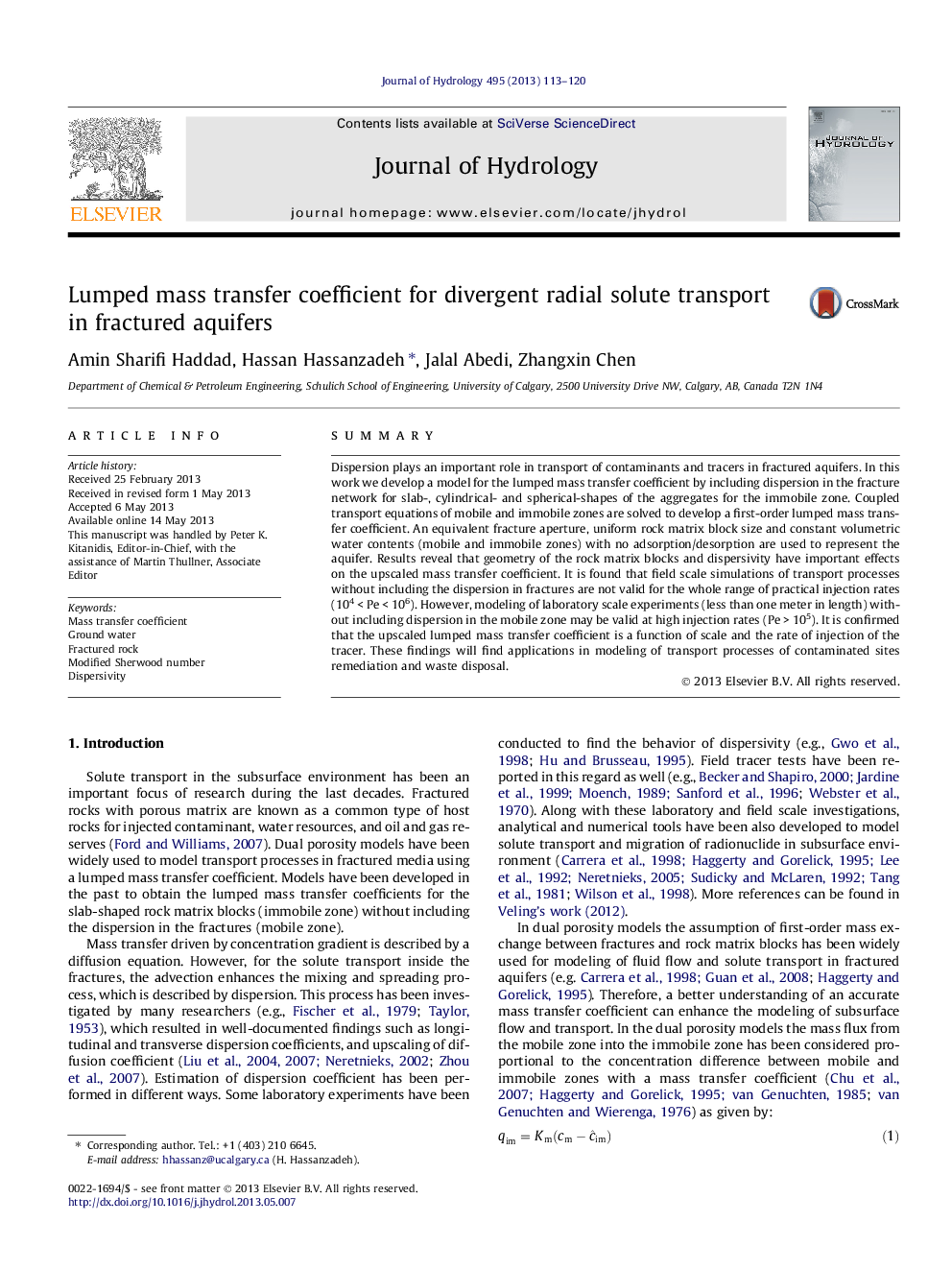| Article ID | Journal | Published Year | Pages | File Type |
|---|---|---|---|---|
| 6413678 | Journal of Hydrology | 2013 | 8 Pages |
â¢A lumped mass transfer coefficient is obtained for transport in fractured aquifers.â¢The mass transfer coefficient is obtained for various geometries.â¢The mass transfer coefficient is a function of scale and injection rate.â¢Field scale simulation without including dispersion in fracture is not valid.â¢Ignoring dispersion in modeling a lab test may be valid at high injection rates.
SummaryDispersion plays an important role in transport of contaminants and tracers in fractured aquifers. In this work we develop a model for the lumped mass transfer coefficient by including dispersion in the fracture network for slab-, cylindrical- and spherical-shapes of the aggregates for the immobile zone. Coupled transport equations of mobile and immobile zones are solved to develop a first-order lumped mass transfer coefficient. An equivalent fracture aperture, uniform rock matrix block size and constant volumetric water contents (mobile and immobile zones) with no adsorption/desorption are used to represent the aquifer. Results reveal that geometry of the rock matrix blocks and dispersivity have important effects on the upscaled mass transfer coefficient. It is found that field scale simulations of transport processes without including the dispersion in fractures are not valid for the whole range of practical injection rates (104 < Pe < 106). However, modeling of laboratory scale experiments (less than one meter in length) without including dispersion in the mobile zone may be valid at high injection rates (Pe > 105). It is confirmed that the upscaled lumped mass transfer coefficient is a function of scale and the rate of injection of the tracer. These findings will find applications in modeling of transport processes of contaminated sites remediation and waste disposal.
